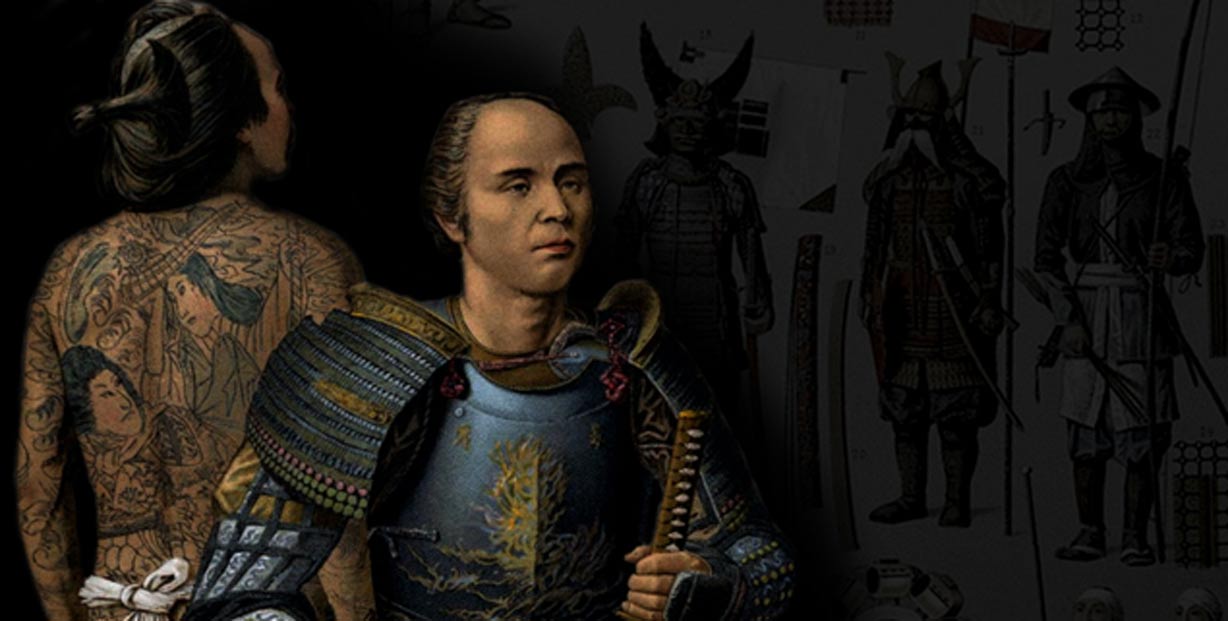
A Dark Time for the Samurai and the Trouble with the Feudal Japanese Caste System
In Japanese jidai-geki (period) films, especially those made under the military government, samurai warriors are presented as the ideal warriors who were motivated solely by honor and loyalty, preferring to fight to the death rather than admit defeat. The true samurai warriors were not only well-trained in the art of warfare, they were also highly learned in literature and poetry. The idea of the samurai became the embodiment of the philosophical ideal of Japan and attracted global admiration for their nobility.
However, the samurai experienced a dark period beginning in the sixteenth-century Japan which led to many changes to the samurai caste. It was also a time when it was painfully apparent that the samurais were not only the first people to jump into battle, they also had to suffer the most damage with major changes in the government due to their place in society. Ironically, the most difficult time in the life of a samurai was not in a field of battle, but at a time of peace in his own land.
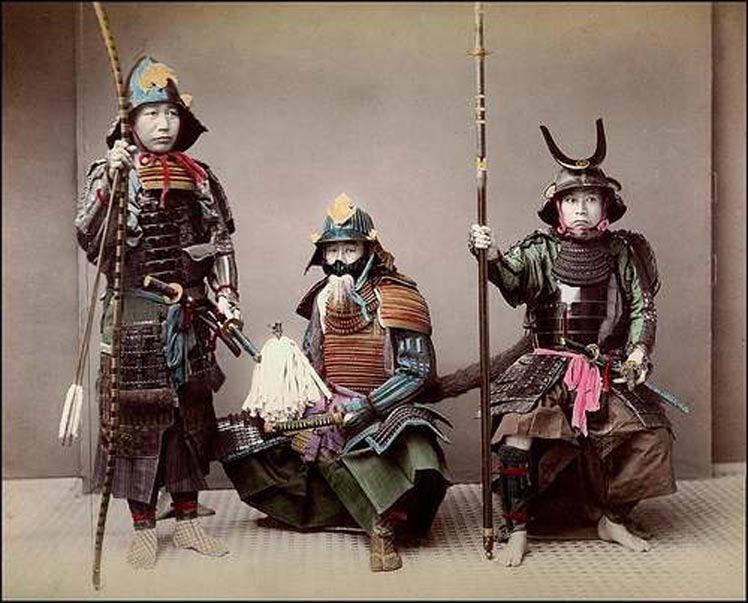
Samurai of the Japanese Edo Period (1603-1868) (CC BY 2.0)
THE IMPORTANCE OF THE SAMURAI
From the late twelfth century onward, Japan was ruled by a shogunate (the shogun was the commander of the Imperial Army) with the emperor reduced to a puppet figure, stripped of all power or influence. In this society, the samurais were on top of the heap. The samurai warrior class made up of only 10 percent of the population and held enormous power. The samurai answered only to the daimyo (feudal lord) for whom they worked, and the daimyo, in turn, answered only to the shogun.
A samurai, as a feudal retainer, owed personal loyalty to his daimyo, and if his daimyo was killed or defeated, which happened quite often given the frequent battles, the samurai would be out of a job. If he couldn’t find employment with another daimyo—an idea which he would have found to be repulsive in itself as he was supposed to die for his own daimyo, a samurai became a ronin (a masterless samurai). The ronin is also a frequent figure in jidai-geki movies, usually portrayed as a loner with the dangerous, romantic aura equaling that of a solitary gunman in a western movie.
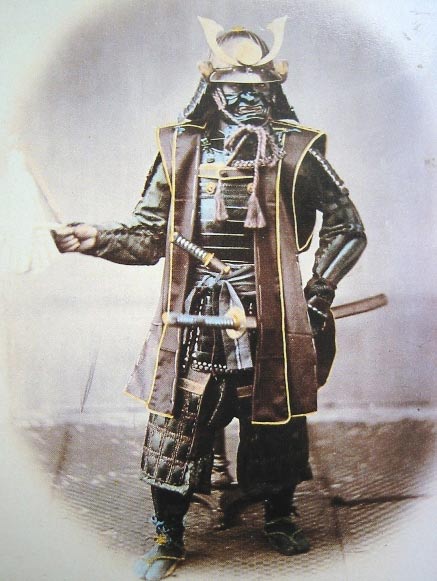
Japanese samurai in armor, 1860s (Public Domain)
One illustration of the importance of the samurai class is this: when a samurai walked past, members of the lower classes were required to bow and show respect. If a farmer or artisan neglected or refused to bow, the samurai was legally entitled to chop off the person's head. There have also been stories of samurais killing those of the lower castes to test new swords or weapons—the lower castes were said to consider this an honor. In the event that a samurai and a farmer were in danger, the farmer would be obliged to sacrifice himself so that the samurai could live for the sake of his country, as the samurai was viewed as having the more important duty of defending his country in a time of war.
FEUDAL JAPANESE CASTE SYSTEM
Feudal Japan had a four-tiered social structure based on the principle of military preparedness. The daimyo and their samurai retainers occupied the top structure. Three varieties of commoners stood below the samurai; First the farmers, who were superior to other caste systems except the samurai, as they worked in fields to produce food upon which other castes depended. The craftsmen were next in the social ladder as they made products for the people’s needs. Merchants were considered the lowest caste since they did not manufacture any products. Then there was the shunned caste which was ostracized by others, politely referred to as the Burakumin (the people of the village). They worked in occupations that were considered dirty or impure by the feudal Japanese. This included jobs such as leather tanning, butchering animals, and executing condemned criminals. As a rule, the caste conventions in feudal Japan dictated what one could wear, what weapons one could carry and what kind of house one could live in. Therefore, there would be no mistaking a person’s social class based on their appearance.
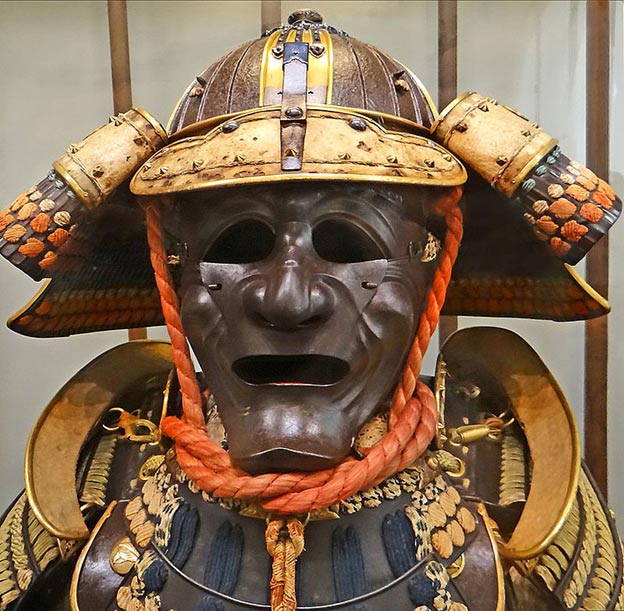
Edo Period Samurai armor. (CC BY 2.0)
The entire feudal Japanese social structure revolved around supporting the samurai military establishment. If there were no major wars, most samurai served as bureaucrats living on a form of social security and were paid a set stipend. The samurai class was arguably the most economically secured caste in feudal Japan.
Adding to their economic security, there were other laws which separated the samurai from the lower classes. The samurai were required to carry daisho, the two swords of the samurai. The daisho usually consists of a katana (a long sword) and a wakizashi (a short sword), which marked the social status of a samurai.
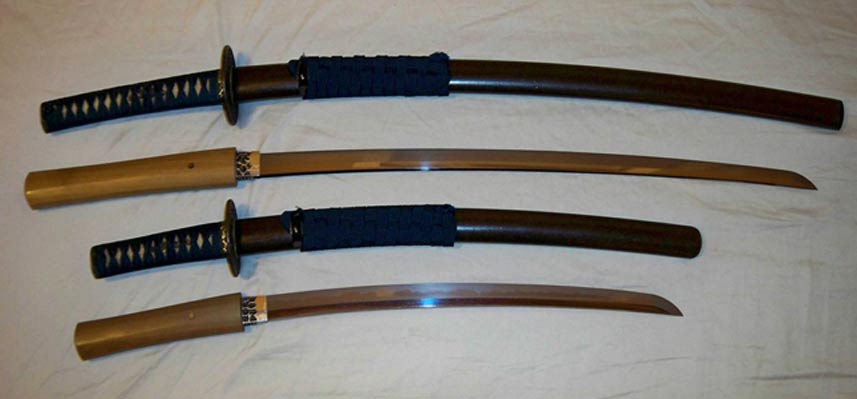
A Daito (top) and wakizashi (bottom) in the form of a daishō, showing the difference in size. (CC BY-SA 3.0)
Although in the time of peace, these swords became no more than a symbolic emblem of power rather than a weapon used in a day-to-day life, to maintain the distinction between samurai and commoners as well as to prevent an uprising from the lower classes, the government would conduct raids called Katanagari (sword hunt). Commoners discovered with swords, daggers or firearms would be put to death.
Although there were separate laws for the samurai class, most laws applied to all three types of commoners equally. For example, samurai and commoners had different kinds of mailing addresses. The commoners were identified by which imperial province they lived in, while the samurai were identified by which daimyo's domain they served. The samurai class was also the only group of people who were allowed to have surnames, or family names, a privilege not allowed for commoners unless they had been awarded one for special service to a daimyo.
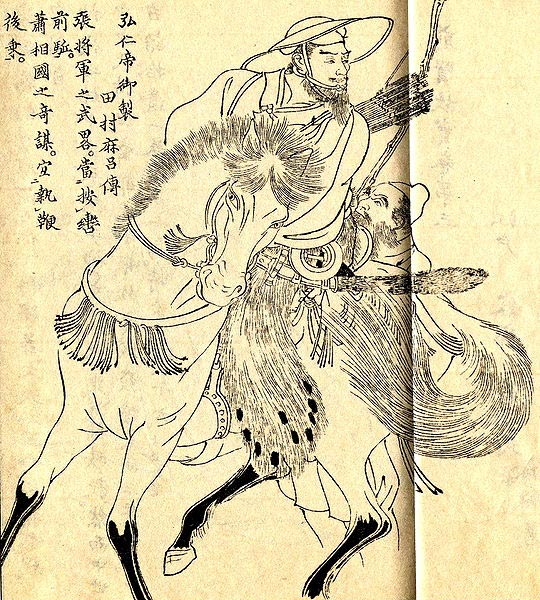
Sakanoue no Tamuramaro (坂上田村麻呂 758 - 811), a general and shogun of the early Heian Period of Japan. (Public Domain)
A man or woman born into the samurai, farmer, craftsman, or merchant class was ordained to stay in it. Therefore, bans on inter-caste interactions and ties by marriages applied. There was only one way to circumvent the ban on the classes intermarrying and that was through adoptions. If a woman from a common family got engaged to a samurai, for example, she would need to be officially adopted by a second samurai family. However, this was a very rare occurrence as there were not many samurai family willing to adopt a commoner into their clan, let alone a female commoner who would not be able to carry on their family name.
In its basic outline, the feudal Japanese caste system was rigid and absolute, with threats of capital punishments to the offenders regardless of their social class. These distinctions served to protect the rights of the people from the highest to the lowest caste and extended even to the outcasts. For example, when a horse, ox or other large farm animal died, it did not matter if the animal had been the personal property of a farmer, or if its body was found on a daimyo's land, only the burakumin had any right to it. Trespassing on this right was forbidden, even for a samurai.
THE TIME OF CHANGES FOR THE SAMURAI
By the sixteenth-century, the feudal society started to disintegrate when the Tokugawa shogunate came to power. As it was an era of peace, the samurai warrior skills were not needed, and with the change of power came the rise in costs of products. As stipends due to the samurai class were not raised in accordance to the rising living costs, even those who had managed to make a living as government servants did not make enough for their families. A daimyo was no longer able to have as many retainers leading to more masterless samurais wandering the country.
Almost intolerable for the samurai was the widespread practice of hanchi whereby part of the samurai’s family stipends would be withheld with increasing regularity to help relieve the financial pressures of their lords. This further reduced the samurai’s standard of living without providing an alternative source of income. Such pressures from the shogunate and their daimyos, as the mounting personal debts which retainers found increasingly difficult to pay off, combined to produce dissatisfaction and desire for reform among the samurai. Efforts were made to improve the samurai's standard of living but most failed to provide relief.
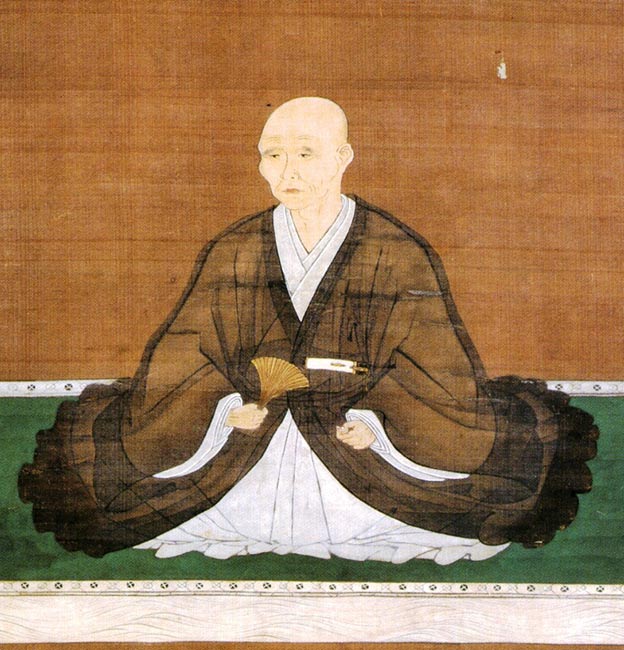
Kinoshita Iesada, a Daimyo in feudal Japan. (1608) (Public Domain)
In 1869, the hanseki hokan (feudal land registers) were returned to the throne, placing the samurai of several daimyo under the direct jurisdiction of the central government. At the same time, the samurai pension system, which had been in place on top of the samurai stipend was substantially altered, resulting in pension reduction, only to be reduced even further a year later. Hanseki hokan also implied the symbolic transfer of samurai loyalty from their domains and lords to the central government and the emperor. Similarly, in 1870 the domains were reorganized, setting the stage for eventual abolition of the samurai class. A year later, the domains were replaced by prefectures which the Japanese still use today. In both cases, reorganization and transformation, numerous offices formerly held by samurais were eliminated.
During the years in which the government was detaching the samurai from traditional means of support in their livelihood, it also stripped the class of time-honored social privileges and status. Meiji leaders, despite their own class background as samurais, no longer allowed the samurai class to continue as an economic unit and retain their special position in society.
Behind this transition was a fundamental redistribution of wealth and power in which the samurai class were the primary victims. With every change announced by the government, the samurai witnessed a further deprivation of age-old privileges due to them and the ultimate dissolution of a society in which they had been the leaders and chief beneficiaries. Although most samurai were handsomely rewarded with security, status, and stipends, it became obvious that these rewards were merely compensation for the samurai's loss of traditional prerogatives and authority to the daimyo and village. The story of the samurai in this period of changes was less than happy. Their lack of purpose and money would haunt them for the next two and a half centuries.
In spite of all these changes, the daisho was still a requirement for a samurai, marking his class. Although, at least at the beginning, it still brought them the respect due to their social status, the samurai’s code and the overall caste convention at the time did not allow them to make a living through menial labor, or anything that was viewed as beneath their class even when it was necessary for them to do so. To not carry their daisho, and to sell goods or do farm works for the samurai were considered offences. As a result, some samurai families had no choice but to secretly manufacture small goods such as umbrellas or toothpicks to make a living, passing these items on to peddlers to sell. Many ronin became bandits, turning their fighting skills to dishonest ends, pillaging crops, burning houses and raping womenfolk. To those of the lower castes the distinction between samurai warriors and bandits became all but meaningless.
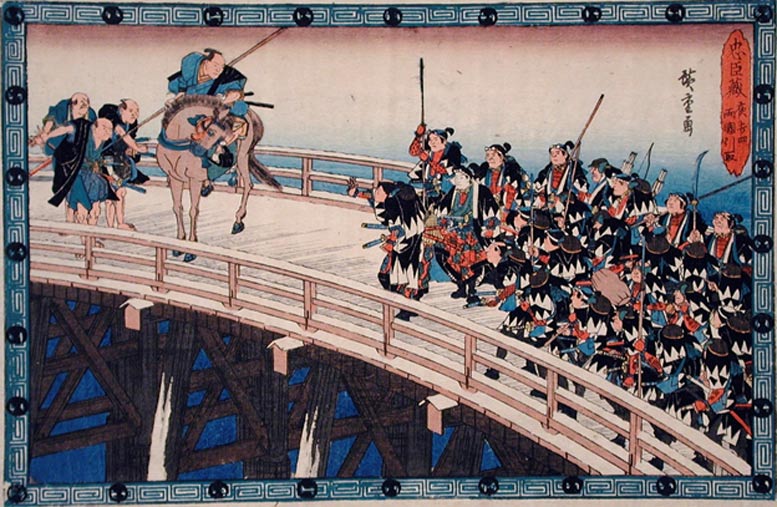
Ronin Stopped from Crossing Ryogoku Bridge by Shogun's Representative. (Public Domain)
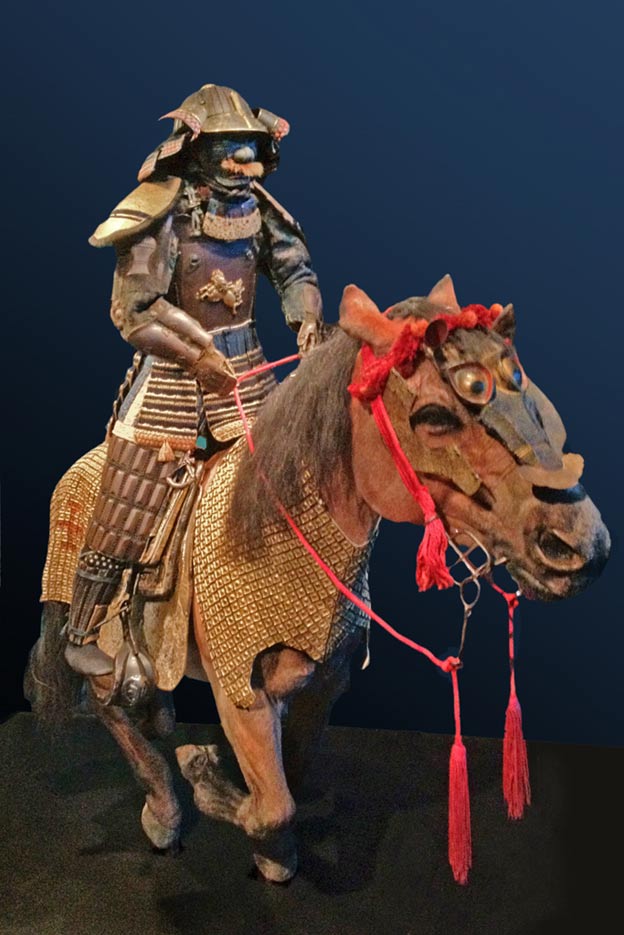
The armor of the Samurai is dated to the Edo era, the seventeenth century. (CC BY 2.0)
The Japanese play Daini no shisha, referenced this period in a scene where a young son of a samurai commits hangenpuku (having his forelock shaved – a hairstyle only allowed to the samurai class) to join his father in dying for a daimyo as a samurai. His father told him to leave him to his death, go home and help their family. It was explained to him that as they could no longer live by the sword alone in the future, it would be very difficult for a samurai to make a living “There is now nothing as unenviable as the lot of a samurai,” his father says.
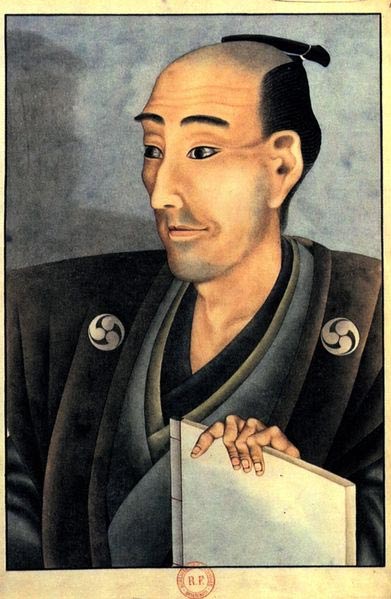
Chonmage, a Samurai haircut from the Edo period. (Public Domain)
As the samurai gradually lost their importance, and the merchants gained wealth and power, taboos against the different classes mingling were circumvented with increasing regularity. The samurai would find a way, honestly or dishonestly, to marry daughters of farmers or merchants if they were rich enough, in turn giving the woman’s family a better standing in society due to their position as his in-laws. Angst-ridden Japanese samurais and merchants would gather together to enjoy the company of courtesans or watch kabuki plays and class mixing became the rule rather than the exception.
THE POSSIBLE BIRTH OF “THE WAY OF THE SAMURAI”
Whether it is fair or not, death has always been linked to the samurai. It is the samurai's presumed affinity for death that seems to set them apart from other warriors and captures the imagination. However, it was entirely possible that the samurai were not as obsessed by death in battle as we have been led to believe, and the link between the samurai and the idea of a noble death came in this period of change.
In the time of change in the feudal period, it was in haiku clubs that the social classes could forget their differences as well as the difficulties of the outside world and let their creativity run free. In these clubs, members were free to choose pen names to obscure their social ranks, letting the classes freely mingle in literature. This difficult period gave birth to an array of great poetry describing the discontent of the classes in feudal Japan, from the samurai to the merchants.
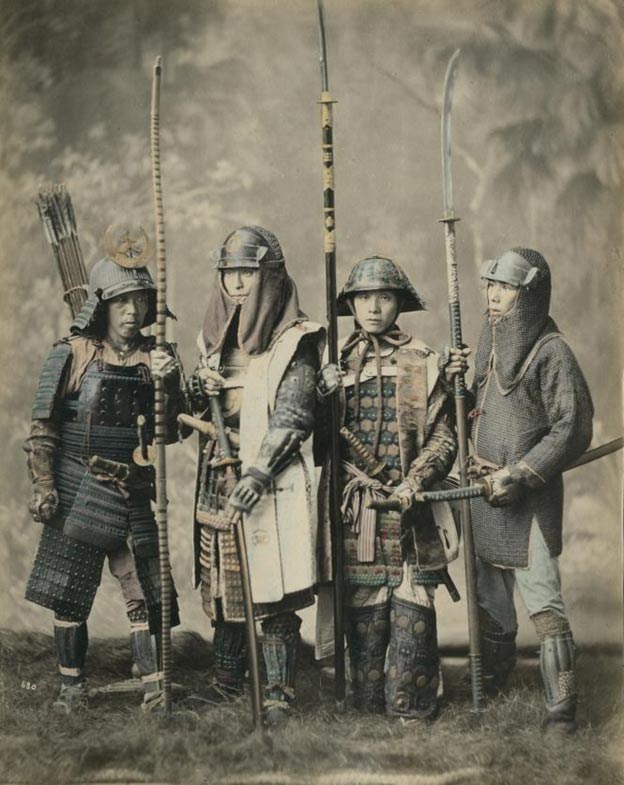
A photograph of Samurai (circa 1870 – 1890). (CC BY 2.0)
The readers of this literature, both Japanese and foreigner, owe much of their death-centered view of the samurai to the Hagakure, a book composed in the 18th Century. The Hagakure, and books in similar vein, sought to stiffen the flagging martial spirit among the samurai class, which was by this time destitute and directionless. Much of the idealism still familiar to this day began from the pages of these books. However, at the same time, the wisdom contained within these books was often distorted or misconstrued due to mistranslation or even misunderstandings.

The Japanese Characters for Bushido written in Gyo-Kaisho style calligraphy. Included down the side are the 7 common tenets of Bushido. Bushido is translated as “The way of the warrior” (CC BY-SA 3.0)
A famous example is provided in the opening chapter of the Hagakure itself which reads, “The way of the samurai is found in death.” This line was often quoted and found its way into many written works on the samurai and the Japanese martial culture. However, the continuation of the line was not quoted as often: “… If by setting one's heart right every morning and evening, one is able to live (through his spirit) as though his body was already dead, he gains freedom in the way of the samurai. His whole life will be without blame, and he will succeed in his calling.”
That lesser quoted part somewhat changes the way a reader might view the figure of a samurai, adding a depth and thoughtfulness to the modern image of the samurai and their perceived partiality to death. A feudal samurai, Daidoji Yuzan, wrote in the same vein, “A samurai must, before all things, keep constantly in mind the fact that he has to die. If he is always mindful of this, he will be able to live in accordance with the paths of loyalty and filial duty… He will also be a fine and admirable personality. For existence is impermanent as the dew of evening, and the hoarfrost of morning, and particularly uncertain is the life of the warrior.”
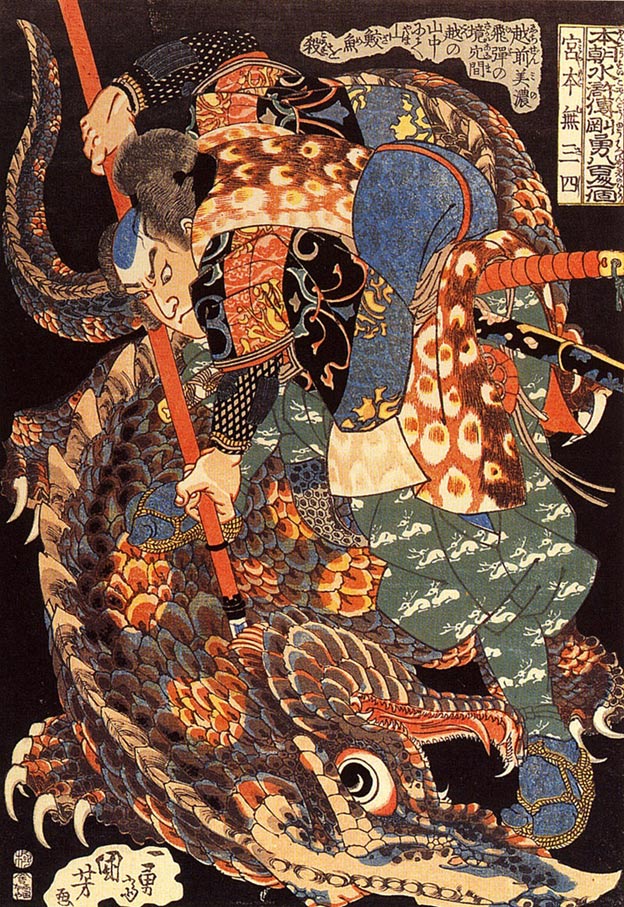
Miyamoto Musashi killing a giant creature, from ‘The Book of Five Rings’, Bushido literature. (Public Domain)
The samurai view and idea of death was shaped not so much from the ways of war as the realities of life. Earthquakes toppled castles, plagues ravaged the countryside, fires often swept towns, and famine was an ever-present danger. On top of all that, there are always changes in society and day-to-day living. The Japanese poet and essayist, Kamo no Chomei witnessed a cruel economic change that tormented Japan from 1181 to 1182, and again happened in the sixteenth century. “There was little trade, but grain was worth more than gold. Beggars were many in the streets, clamor of suffering, sorrow filled the air.”
Over the centuries, many famous samurai would die not in battle but from illness and poverty. Promising young lords such as Mori Takamoto and Taira Shigemori died young in their beds instead of in a war. This contributed to the sentiment behind the Japanese appreciation for fleeting beauty and the “way of the samurai”.
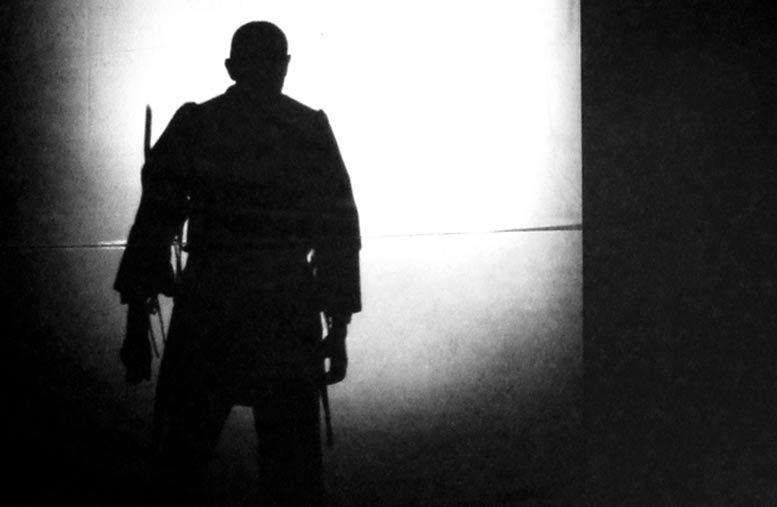
Samurai Silhouette. (CC BY 2.0)
Featured image: Deriv; A lithograph plate showing Japanese Samurai warriors in a variety of different costumes (Public Domain)
References
Philip Kemp. (2010) “A Time of Honor: Seven Samurai and Sixteenth-Century Japan.” Criterion.com https://www.criterion.com/current/posts/443-a-time-of-honor-seven-samurai-and-sixteenth-century-japan
Birt, M.P., “Samurai in Passage: The Transformation of the Sixteenth-Century Kanto”, The Journal of Japanese Studies, Vol. 11, No. 2 (Summer, 1985), pp. 369-399
“Castes Japanese Feudal Hierarchy” (2013). HeirarchyStructure.com http://www.hierarchystructure.com/castes-japanese-feudal-hierarchy/
Golder, H., “The Iliad and The Seven Samurai”, Arion: A Journal of Humanities and the Classics, Third Series, Vol. 17, No. 3 (2010), pp. 45-48
Howell, David L. Geographies of Identity in Nineteenth-Century Japan, Berkeley: University of California Press, 2005.
Kallie Szczepanski. (2014) “Japan Classes”. AsianHistory.About.com http://asianhistory.about.com/od/japan/p/ShogJapanClass.htm
Moore, R.A., “Samurai Discontent and Social Mobility in the Late Tokugawa Period”, Monumenta Nipponica, Vol. 24, No. 1/2 (1969), pp. 79-91
Powell, B., “The Samurai Ethic in Mayama Seika's Genroku Chūshingura”, Modern Asian Studies, Vol. 18, No. 4, Special Issue: Edo Culture and Its Modern Legacy (1984), pp. 725-745
"ronin". Encyclopædia Britannica. Encyclopædia Britannica Online.
Encyclopædia Britannica Inc., 2016. Web. 19 Apr. 2016
<http://www.britannica.com/topic/ronin>.